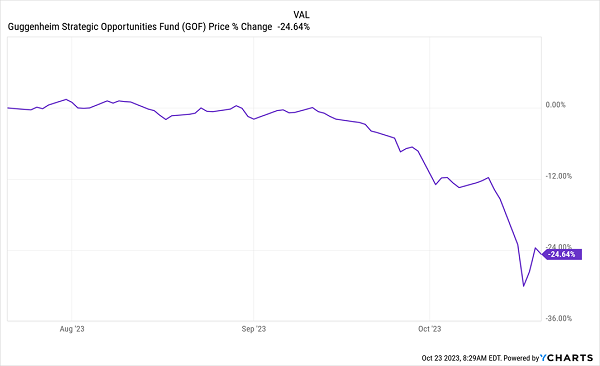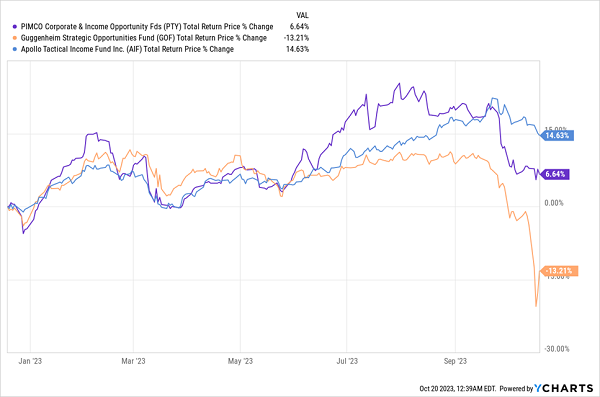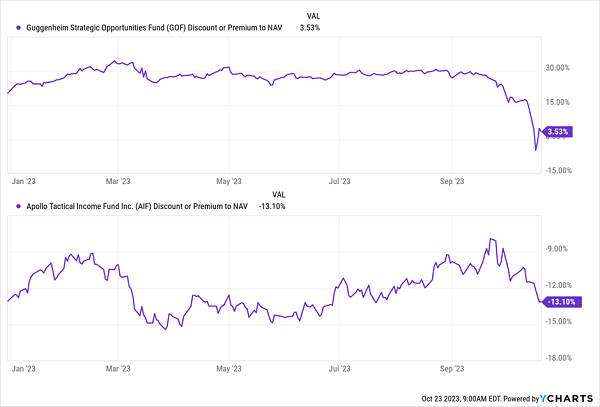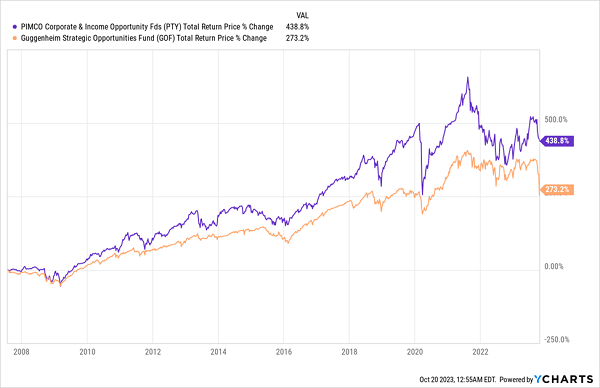It was the best of times, it was the worst of times. No, I’m not talking about Dickensian London—I’m talking about the mood among investors in our favorite high-yield investments, closed-end funds (CEFs), these days.
Those of us who know what to look for in CEFs are finding a rich hunting ground of big dividends. Yields are up—our CEF Insider portfolio yields an average of 10.2% today—and we’re in a good position to book longer-term profits due to the big discounts still available. (We can thank the cautious folks who invest in CEFs for that—they’ve been slower to buy back in after the 2022 pullback, due to alarmist media headlines.)
At the end of the day, the key to building a high, sustainable income stream in CEFs is to remember these four key pillars of CEF investing:
- Pricing
- Dividend sustainability
- Management
- Portfolio
Now, I’ll admit that these aren’t easy things to keep track of on a regular basis for folks who don’t have time to treat CEFs like a full-time job (which is why I launched CEF Insider—to take on this work for you!).
But pricing is pretty easy to keep track of—CEFs update their discounts or premiums to net asset value (NAV, or the value of the holdings in their portfolios) every trading day. And if the price of the fund on the market is a lot higher than its NAV, there’s a good chance that CEF is a sell.
Shockingly, although CEFs have been around for more a century, many investors still don’t take that very first step. And that’s a big opportunity for us!
Consider the Guggenheim Strategic Opportunities Fund (GOF), which recently—and suddenly—lost nearly a quarter of its market price, denting its investors’ holdings:
GOF Price Takes a Dive

As I write, GOF trades at a small, 3% premium to NAV, versus the 30% premium it held a month ago. This was easy to see coming, so I can’t gloat much about calling this back in January. The high premium was a serious risk that investors should have caught.
Just for fun, I ran this scenario through the Dall-E AI-based image generator, and this is how it depicted those unfortunate GOF holders:

Source: Dall-E
That’s not a table you want to sit at! And it’s so easy to avoid: just don’t buy CEFs at massive premiums. Of course, there were other warning signs. GOF’s portfolio, for example, has a big problem: its duration.
GOF’s Short-Termism Is a Risk

Source: Guggenheim Investments
Basically, GOF’s management team has focused on shorter-duration bonds at a time when potentially higher-for-longer interest rates make longer-term corporate bonds more attractive.
A better strategy can be found in the PIMCO Corporate & Income Opportunity Fund (PTY), which I’ve mentioned a number of times this year, after highlighting it in a Contrarian Outlook article at the end of 2022, when investors were bearish on everything. PTY, in purple below, beat GOF, in orange, from the time of that article.
PTY Outruns GOF

But look at that blue line soaring above the other two. That’s another corporate-bond CEF: the 11.5%-yielding Apollo Tactical income Fund (AIF). A CEF Insider holding, this one has outpaced GOF by a massive margin.
Why did this happen?
PTY’s portfolio has focused more on mortgage-backed securities alongside the use of bond derivatives to more actively change the portfolio’s sensitivity to interest rates; GOF does not do this. AIF, meantime, focuses on senior loans that were oversold through the pandemic and again in 2022, creating buying opportunities to wait for a bounce back.
Of course, you don’t need to dig into these portfolios to the obsessive detail that I do. Just look at GOF’s premium (in the top chart below) compared to AIF’s discount (the bottom chart). AIF’s appeal is pretty clear:
AIF: the Obvious Bargain

Which brings me back to PTY, which has a high premium, too—21% as I write. That makes it a risky play for its 11.6% yield, until you remember PTY (in purple below) has remained one of the best performing corporate-bond funds (not just CEFs) in the world for many years. GOF, for its part, simply hasn’t kept pace.
PTY Is the Rare CEF That Can Earn Its Premium

There’s surely a risky but potentially profitable trade to be made here in buying PTY. But there’s also a sleep-well-at-night investment to be had with AIF, and that’s obviously our strong preference for long-term income and upside potential. The key, of course, is the discount: we plan to ride it along, booking gains as we do, then sell well before the risk of a GOF-like plunge arises.
4 More “Follow the Discount” CEF Buys Kicking Out Huge 9.9% Yields Now
Discounts to NAV—a CEF-only “quirk”—really are our surest route to gains in these funds. And now, with CEF discounts (and yields) running high, is a terrific time to build these powerful income generators into your income portfolio.
Start with the 4 top CEFs I’m recommending now. They throw off an outsized 9.9% average yield, so you’re essentially collecting 10% of your upfront buy in cash every single year! Hold for a decade, and you’ve recouped all of your buy in cash! That’s the definition of safety.
Plus these funds’ deep discounts point to more upside ahead—and help cushion them if the market gets rockier from here.
